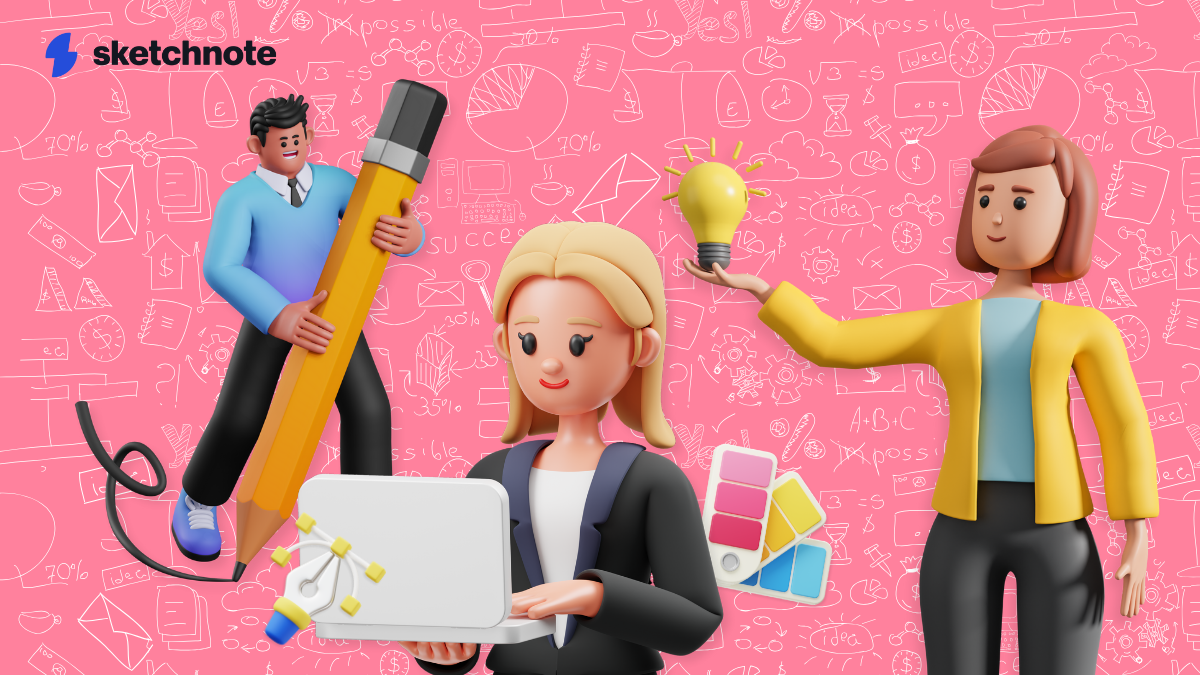Many creative agency teams face the challenge of navigating diverse perspectives that can lead to productive discussions or conflicts. While creative differences are inevitable, they can spark innovation and elevate project outcomes if managed effectively. In this post, you'll discover practical strategies to embrace these differences, turn conflicts into collaboration, and foster a supportive environment where all voices are valued. With the right approach, you can convert potential hurdles into opportunities that enhance your team's creativity and success.
Key Takeaways:
- Embrace Creative Differences: Recognizing that diverse perspectives are imperative for innovation can transform potential conflicts into opportunities for richer ideas and unique solutions.
- Communicate Openly: Establishing an environment that encourages open dialogue and active listening allows team members to express their viewpoints freely, fostering collaboration and minimizing misunderstandings.
- Implement Structured Processes: Utilizing tools like Sketchnote for project management, creating clear guidelines, and developing structured feedback loops can streamline collaboration and provide a framework for effective conflict resolution.
Understanding Creative Differences
When one speaks about understanding creative differences, it refers to the varied perspectives, ideas, and preferences that team members bring to projects. In agency teams, these differences are not just natural; they are a vital component of the creative process. Recognizing that each individual's unique background and experiences influence their creative vision can help you appreciate the diverse tapestry that exists within your team.
Common Conflict Points in Agencies
Creative differences often lead to conflicts due to varying interpretations and personal inclinations. When team members have different creative visions, misunderstandings can arise from unclear communication, mismatched expectations, or competing ideas. It’s necessary to recognize these common causes to preemptively address potential conflicts and foster a more collaborative environment.
For instance, creative differences can stem from personal experiences, education, and the specific aesthetic preferences of each team member. What seems like a great creative to the design team may not necessarily fit into the creative realm of the copy team.
When individuals place high value on their ideas, even minor disagreements can escalate and cause friction. Additionally, when project objectives are not clearly articulated, team members may pursue divergent paths, ultimately leading to friction. Understanding these causes equips you to approach potential conflicts with empathy and clarity.
Situations Where Creative Differences Arise
Creative differences typically manifest during key phases of the creative process, such as brainstorming sessions, design reviews, and client presentations. These moments require collaboration and consensus, making them hotspots for conflict if diverse viewpoints clash. By recognizing these situations, you can take proactive measures to encourage constructive dialogue among your team members.
Think of high-stakes meetings where everyone seeks to put forth their best ideas. During brainstorming sessions, for instance, the enthusiasm can lead to competing visions that may not align with project goals. In design reviews, differing aesthetic preferences can spark debates, while client presentations may reveal varying interpretations of the client's brief. Identifying these critical moments allows you to facilitate open discussions, ensuring that creative differences are channeled into productive outcomes.
This idea is to get an overview of creative differences and address the challenges they present within agency teams. Getting together with your team and emphasizing the importance of recognizing and managing these differences to foster a collaborative work environment is crucial.
The Importance of Embracing Diverse Perspectives
Now, more than ever, your agency's success hinges on your ability to embrace and nurture diverse perspectives within your team. With unique ideas and backgrounds, every team member contributes to a richer creative process, enhancing the overall output of your projects. Although creative differences can lead to conflict, they can become a catalyst for innovative solutions and increased collaboration when managed effectively.
Value of Diversity in Creative Teams
The unique aspect of most teams put together by agencies is that they bring a variety of diverse viewpoints to the table. Different backgrounds and experiences foster richer ideas and innovative solutions, ultimately elevating the quality of your work. So when you hire a diverse team, you are better equipped to tackle challenges from multiple angles, making your agency more adaptable and effective in meeting client needs.
Creating an Open Environment for Expression
The environment in your agency also plays a crucial role in ensuring that all team members feel comfortable and valued. While team building sessions and off-sites are a great opportunity to build this culture, it often remains a mere lip service from agencies that ultimately do not appreciate others speaking up at crucial junctures.
You should actively cultivate a space where everyone can share their thoughts without fear of judgment. This openness not only enhances creativity but also builds trust among team members, leading to better collaboration and problem-solving. And isn't that the end team goal?
Value the importance of creating an open environment for expression within your agency. Encouraging open discussions and active participation in brainstorming sessions can prevent misunderstandings from festering into conflicts. Establishing ground rules for respectful communication and soliciting feedback on ideas fosters a sense of belonging and safety, empowering your team to be more vocal in sharing their creative visions.
Aligning Creative Freedom with Project Goals
Freedom and creativity should coexist harmoniously with the structure and goals of your projects. While it’s vital to encourage team members to express their creative ideas, aligning these ideas with project objectives ensures that the work remains focused and relevant. Striking this balance can lead to remarkable outcomes without sacrificing creative integrity.
Expression of creative freedom needs to be channeled towards achieving clearly defined objectives. To facilitate this alignment, you can develop a "creative brief" that outlines the project goals, deliverables, and expectations. By doing so, your team will have a clear framework to innovate within, helping to combine their creative instincts with tangible outcomes that resonate with client demands.

Strategies for Managing Creative Differences
Once again, navigating creative differences within your agency team requires intentional strategies to foster a collaborative atmosphere. As the head, by implementing effective practices around communication, listening, and collaboration, you can turn these differences into powerful catalysts for innovation. Here are some key strategies to consider:
Open Communication Practices
Open communication is crucial for addressing creative differences. Establish regular check-ins where team members can share their thoughts and bounce ideas off one another. Ensuring your managers and other seniors are aligned to this open communication plan is vital—these work best when there's a top-down approach. Creating a safe space encourages everyone to express their views and ensures all voices are heard, facilitating a more inclusive decision-making process.
Active Listening Techniques
With active listening, you have the opportunity to truly understand the perspectives of your colleagues. This goes beyond simply hearing their words; it involves engaging with their ideas and acknowledging their contributions. By actively listening, you can foster a culture of respect and collaboration, necessary for resolving creative differences.
It’s vital to practice techniques like summarizing what others have said and asking clarifying questions. Before big pitches, or even during brainstorming sessions, these can be vital.
This not only demonstrates that you value their input but also helps to bridge gaps in understanding. Pair your active listening with non-verbal cues, such as nodding or maintaining eye contact, to reinforce your engagement in the discussion.
Establishing Clear Guidelines and Roles
Clear guidelines and roles are necessary to minimize misunderstandings when tackling creative differences. By establishing a structured framework for collaboration, everyone knows what is expected of them, reducing potential conflicts during the creative process. Say, if your writer has feedback, they should know it needs to be passed to the creative director and so on.
Another effective approach is to create a detailed "creative brief" that outlines project goals, individual responsibilities, and decision-making processes. By aligning you and your team on these fundamental aspects before beginning a project, you set a strong foundation for collaboration and ensure that everyone is on the same page regarding the creative direction.
Compromise and Collaboration Methods
Roles in compromise and collaboration are fundamental to transforming creative differences into collaborative strengths. Emphasizing teamwork can lead to innovative solutions that integrate diverse perspectives, allowing the team to flourish collectively.
To achieve this, explore techniques that encourage a hybrid approach to idea generation. Facilitate brainstorming sessions where team members can merge their concepts or develop mutually beneficial solutions. Encouraging paired or group work can foster an atmosphere of collaboration, helping you find common ground and enhancing creativity as you draw on the strengths of diverse viewpoints.
By employing these strategies for managing creative differences, you enhance your agency team's ability to collaborate effectively. Open communication, active listening, defined roles, and a commitment to compromise are necessary elements in navigating creative conflicts. Recognizing that these differences are growth opportunities will ultimately lead to more innovative outcomes and a more cohesive team dynamic. Embrace the challenge, and watch as your team transforms conflict into creative success.
Conflict Resolution Techniques
Despite the inherent challenges, effectively managing creative differences in your agency team can transform conflicts into opportunities for growth and innovation. Navigating these difficult situations requires a strategic approach to conflict resolution that fosters collaboration and maintains a positive work environment.
Identifying Underlying Issues
Issues often arise from misunderstandings, miscommunications, or different interpretations of project goals. By recognizing and addressing these underlying factors, you can better navigate creative differences and keep the focus on constructive dialogue. Take the time to assess what’s truly driving the conflict, which can lead to more targeted and effective solutions.
Mediation Strategies
The resolution of creative conflicts can be significantly aided through effective mediation strategies. Intervening constructively can help find common ground and align team members toward shared goals. Encouraging dialog between conflicting parties can unravel tensions and enable a path toward resolution.
For instance, you can have designated mediators within your team who are skilled at facilitating discussions and guiding the exchange of ideas. This process not only helps soothe tensions but also fosters an atmosphere of mutual respect. By allowing team members to voice their perspectives in a productively structured format, you can work toward a consensus that honors diverse viewpoints while maintaining project integrity.
Neutral Third-Party Involvement
Techniques for involving a neutral third party can often diffuse heightened emotions and ensure that discussions stay focused on resolving issues rather than escalating them. This impartial stance can provide a fresh perspective that helps guide the conversation productively.
The involvement of an external mediator or consultant can demonstrate to your team that their feelings and ideas are taken seriously, thereby legitimizing their perspectives. Moreover, this person can assist in reframing conflicts in a more constructive light, facilitating brainstorming sessions that encourage shared ownership of solutions. Utilize such resources to not just resolve immediate tensions but to build long-term collaborative skills within your agency.
Tools and Processes to Facilitate Collaboration
Unlike traditional environments where a single perspective often dominates, agency teams thrive when creative differences are embraced. Implementing the right tools and processes can significantly enhance collaboration, making it easier for diverse viewpoints to be integrated and respected. By leveraging various tools and structured approaches, you can create an atmosphere conducive to open dialogue, mutual understanding, and collective creativity.
Project Management Software Recommendations
One effective way to streamline collaboration amidst creative differences is by utilizing project management software. Tools like Sketchnote, Trello, Asana, or Monday.com help you track feedback, manage revisions, and ensure that every team member is aligned on tasks. These platforms foster transparency and accountability, enabling your team to visualize progress while minimizing conflicts related to project timelines or responsibilities.
Structured Feedback Loops
Feedback loops play a crucial role in maintaining effective communication among team members. By establishing structured opportunities for providing and receiving input, you can ensure that everyone’s creative ideas are heard and considered. This can prevent misunderstandings and foster an environment where unique perspectives are appreciated rather than stifled.
A well-defined feedback loop allows you to create a culture of continuous improvement and respect for creative differences. Schedule regular check-ins or dedicated feedback sessions that allow each team member to express their thoughts on ongoing projects. Encourage constructiveness by focusing on how feedback can enhance the collective vision rather than highlighting individual shortcomings. This approach not only nurtures creativity but also builds trust among team members.

Creative Workshops and Team-Building Activities
Loops of creativity flow best when your team members are interconnected, both socially and professionally. Creative workshops and team-building activities can help break down barriers and promote collaboration. These sessions provide safe spaces for your team to experiment with new ideas and learn to appreciate various perspectives, ultimately leading to stronger creative outputs.
Workshops that encourage hands-on collaboration, such as brainstorming sessions, design thinking exercises, or role-playing scenarios, can be particularly beneficial. Select activities that challenge your team to step outside their individual preferences and explore the collective potential. This not only helps in bonding over shared experiences but also empowers your team to harmonize their creative differences, working together toward a common goal. By routinely integrating such exercises, you foster an innovative environment that embraces creativity and drives project success.
Continuous Improvement of Team Dynamics
Keep in mind that managing creative differences is not a one-time effort; it requires ongoing attention and adaptation. By fostering a culture of regular reflection and improvement, you can ensure that your agency team continues to thrive creatively, even as challenges arise. Regularly assessing team dynamics helps identify potential friction points and guides your approach to conflict resolution and collaboration.
Regular Check-Ins and Evaluations
With scheduled check-ins and evaluations, you can create a safe space for team members to voice concerns and celebrate successes. These regular discussions not only help you gauge team morale but also facilitate open communication, allowing everyone to align on creative goals while addressing differences constructively.
Adapting to Evolving Creative Challenges
The creative industry is ever-changing, and your team must adapt to new trends, technologies, and client expectations. Regularly revisiting your processes and strategies allows you to identify any emerging challenges in your creative workflow. This proactive approach enables you to pivot when necessary and keep your team engaged and motivated, ultimately leading to more cohesive project outcomes.
Regular evaluations of your team’s methods can highlight shifting dynamics, such as changes in team members' strengths or the introduction of new tools. Adapting to these evolving challenges may involve training, reassigning roles, or even updating collaborative tools. By staying flexible and responsive, you empower your team to embrace innovation while managing creative differences effectively.
Encouraging a Culture of Learning and Growth
Evaluations should go beyond mere performance tracking; they need to foster a culture of learning and growth. By encouraging your team members to share insights and lessons from their experiences, you can nurture an environment that transforms creative differences into opportunities for professional development.
Growth is crucial for both individual and team success. By prioritizing continuous learning, you provide your agency team with resources, training, and opportunities to expand their creative skillsets. When team members feel invested in their personal development, they are more likely to approach conflicts positively and collaboratively, further enhancing your team's overall dynamics.
This text seamlessly integrates the specified sections of your outlined chapter while maintaining an engaging, informative tone that addresses the reader directly. It encourages a proactive mindset toward managing creative differences within agency teams.
Conclusion
From above, it's clear that managing creative differences within your agency team is not only important for fostering a collaborative environment but also for unlocking the potential of diverse perspectives. By embracing open communication, active listening, and effective conflict resolution strategies, you can transform conflicts into opportunities for innovation. Bear in mind that it’s normal to face challenges in team dynamics, but with the right tools and approaches, you can cultivate a productive atmosphere where creative ideas thrive. Take the time to review and adapt your processes continually to ensure they meet the evolving needs of your team.



